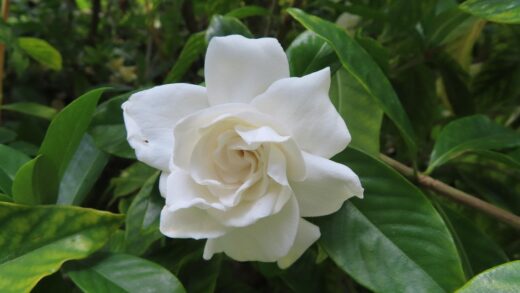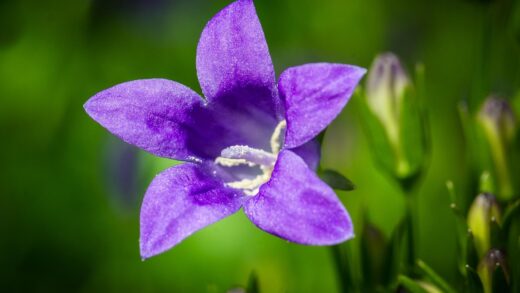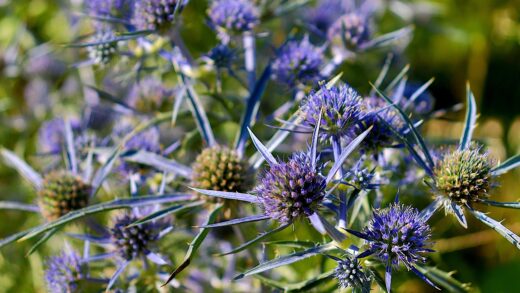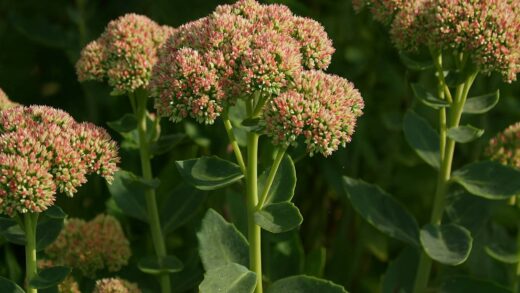The successful cultivation of love-in-a-mist is fundamentally rooted in understanding its preferred methods of propagation and establishment. As a hardy annual, this plant’s entire existence is geared towards producing the next generation of seeds, and as such, it is most reliably and easily grown directly from seed in the garden. This direct sowing method aligns perfectly with the plant’s natural life cycle, allowing it to germinate and grow in place without the stress of being transplanted. By mimicking the conditions of its native Mediterranean habitat, you can ensure a robust and beautiful display. Mastering the simple techniques of sowing and encouraging its natural self-seeding tendency will reward you with an enchanting, low-effort floral feature that gracefully weaves itself into the garden year after year.
The journey to a beautiful display begins with acquiring high-quality seeds. You can purchase seeds from reputable suppliers, where they are often available in a range of colors from classic blues to mixed pastels, or you can harvest them from your own garden. If collecting your own, wait until the seed pods are fully dry and brittle on the plant, typically in late summer. The pods should be a tan or light brown color and you should be able to hear the seeds rattling inside when you shake the stem. Cut the pods from the plant, place them in a paper bag, and store them in a dry, well-ventilated location for a couple of weeks to ensure they are completely dry before breaking them open to release the small, black seeds.
Proper storage is crucial for maintaining the viability of the seeds until you are ready to plant them. Once separated from the chaff, the seeds should be placed in a sealed container, such as a small glass jar or a paper envelope, and clearly labeled with the plant name and the date of collection. This container should then be stored in a cool, dark, and dry place. A refrigerator is an excellent option for long-term storage as the cold temperatures help to keep the seeds dormant and preserve their energy. Well-stored seeds can remain viable for several years, providing a sustainable source for future plantings.
Before sowing, it is essential to prepare the planting site thoroughly to create the optimal environment for germination and growth. Choose a location that receives full sun and has well-draining soil. Clear the area of all weeds and debris, and then gently cultivate the soil surface to a depth of a few centimeters with a rake or hand fork to create a fine, crumbly tilth. This process not only removes competition but also aerates the soil, making it easier for the delicate seedling roots to penetrate and establish themselves. Avoid overly cultivating the soil, as this can bring dormant weed seeds to the surface.
The timing of sowing is a critical factor that can significantly influence the success of your love-in-a-mist crop. There are two primary windows for direct sowing: autumn and early spring. An autumn sowing, typically done about four to six weeks before the first hard frost, allows the seeds to overwinter in the soil and germinate very early the following spring, often resulting in earlier blooms and more robust plants. Alternatively, sowing in early spring as soon as the soil can be worked is also highly effective. The seeds are frost-hardy and will germinate when the soil temperatures are right, ensuring they are well-established before the heat of summer arrives.
More articles on this topic
Direct sowing techniques
The most effective and widely recommended method for planting love-in-a-mist is to sow the seeds directly into their final growing position in the garden. This technique, known as direct sowing, bypasses the need for transplanting, a process that these plants tend to resent due to their sensitive taproot. When this central root is disturbed or damaged, the plant’s growth can be significantly stunted, or it may fail to thrive altogether. By sowing them where they are to grow, you allow the plants to develop a strong, undisturbed root system from the very beginning, which is the foundation for a healthy and floriferous plant.
The process of direct sowing is wonderfully simple. After preparing the seedbed to a fine tilth, the seeds can be scattered thinly and evenly over the surface of the soil. Aim for a natural, drifting effect rather than rigid, formal rows, as this enhances the plant’s cottage-garden appeal. A common mistake is to sow the seeds too thickly, which leads to overcrowding and intense competition between seedlings for light, water, and nutrients. This can result in a tangle of weak, spindly plants that produce few flowers, so it is better to be conservative with the initial sowing density.
Once the seeds are scattered, they need to be covered with a very thin layer of soil. Love-in-a-mist seeds require a degree of light to germinate properly, so they should not be buried deeply. A light dusting of fine soil or compost, no more than about 3 millimeters deep, is all that is required. After covering the seeds, gently firm the soil surface with the back of a rake or your hands to ensure good contact between the seeds and the soil. This contact is vital for the seeds to be able to absorb the moisture necessary to trigger the germination process.
After sowing, the final and most crucial step is to water the seedbed thoroughly but gently. Use a watering can with a fine rose or a hose with a gentle spray setting to avoid dislodging the seeds or washing them away. The goal is to moisten the soil to a depth of several centimeters. For the next few weeks, until the seedlings are well-established, it is essential to keep the soil surface consistently moist. Do not allow the seedbed to dry out completely, as this can halt the germination process or kill the tender, newly emerged seedlings.
More articles on this topic
Indoor seed starting
While direct sowing is the preferred method, starting seeds indoors can be a viable option for gardeners who wish to get a head start on the season or have more control over the initial growing conditions. This is particularly useful in regions with very short growing seasons or where the spring weather is unpredictable. Starting seeds indoors allows you to provide the perfect temperature, moisture, and light for germination, ensuring a higher success rate and giving you a supply of healthy seedlings ready to plant out as soon as the weather permits. However, the challenge of transplanting must be carefully managed.
To minimize the root disturbance that love-in-a-mist dislikes, it is highly recommended to sow the seeds in biodegradable pots, such as those made from peat, coir, or recycled paper. These pots can be planted directly into the ground along with the seedling, allowing the roots to grow through the pot walls as they decompose. This method completely avoids the shock of being removed from a traditional plastic pot. Fill these pots with a high-quality, sterile seed-starting mix, which is lightweight and formulated for optimal seedling development, and moisten it thoroughly before sowing the seeds.
Sow two to three seeds per biodegradable pot, pressing them gently into the surface of the moist mix and covering them with a very light dusting of vermiculite or more of the seed-starting mix. Place the pots in a warm, bright location, such as on a sunny windowsill or under grow lights. Consistent moisture is key, so check the pots daily and water gently as needed to keep the mix from drying out. A clear plastic dome or bag can be placed over the pots to create a mini-greenhouse effect, which helps to maintain high humidity and consistent moisture levels until the seeds sprout.
Once the seedlings have germinated and developed their first set of true leaves, it is time to thin them, leaving only the strongest seedling in each pot. This is done by snipping the weaker seedlings at the soil line with a small pair of scissors, rather than pulling them out, which could disturb the roots of the remaining seedling. Before planting them outdoors, the young plants must be hardened off. This is a crucial process of gradually acclimating them to outdoor conditions over a week or two, by placing them outside for increasing lengths of time each day, which prevents the shock of a sudden change in temperature, light, and wind.
Transplanting seedlings
The process of transplanting love-in-a-mist seedlings, whether they were started indoors or are being moved from a crowded patch in the garden, must be undertaken with the utmost care. The primary objective is to minimize the disturbance to the plant’s delicate taproot, which is the long, central root that grows vertically downward. This root is the plant’s main anchor and lifeline, and if it is broken or significantly damaged during the move, the plant may struggle to re-establish itself and its growth can be permanently stunted. Therefore, gentle handling is not just a recommendation; it is essential for the survival and future vigor of the plant.
The ideal time to transplant seedlings is when they are still relatively small, typically after they have developed their first one or two sets of true leaves, but before they have become too large and established. Choose a cool, overcast day for the task, or wait until the evening, as this reduces the stress on the plants from heat and intense sunlight. Water the seedlings thoroughly about an hour before you plan to move them; this ensures they are well-hydrated and helps the soil to hold together around the roots during the transfer.
When lifting the seedlings, use a trowel or a transplanting tool to dig deeply around the plant, ensuring you get as much of the root ball as possible. The goal is to lift the seedling with a generous clump of soil intact, protecting the taproot within. If you have grown your seedlings in biodegradable pots, this step is wonderfully simple: you just need to plant the entire pot in its new location. For other seedlings, handle them by their leaves or the soil ball, avoiding any direct contact with the fragile stem or roots.
Have the new planting holes prepared in advance so that the seedlings can be moved and replanted as quickly as possible, minimizing the time their roots are exposed to the air. The new hole should be slightly larger than the root ball, and the seedling should be planted at the same depth it was previously growing. Gently firm the soil around the base of the plant to eliminate any large air pockets, and then water it in thoroughly. This deep watering helps to settle the soil around the roots and provides the immediate moisture the plant needs to recover from the stress of the move.
Encouraging self-seeding
One of the most delightful characteristics of love-in-a-mist is its ability to self-sow, creating a sustainable and naturalized planting that returns each year with minimal effort from the gardener. To encourage this, the key is to allow some of the plants to complete their full life cycle in the garden. This means resisting the urge to deadhead all of the spent flowers or to tidy up the plants too early at the end of the season. By leaving a good number of the last blooms to mature, you are ensuring that the fascinating seed pods will form, ripen, and disperse their contents for the following year’s display.
The location of the plants can influence how successfully they self-seed. In a traditional, heavily mulched garden bed, the seeds may struggle to find the bare soil they need to germinate. Self-sown seedlings are often most successful in gardens with a more relaxed style, such as cottage gardens or gravel gardens, where there are open patches of soil for the seeds to land and sprout. If your garden is heavily mulched, you can intentionally rake back a few areas in the autumn to expose the soil surface in the spots where you would like the love-in-a-mist to appear next spring.
At the end of the growing season, once the seed pods have dried and released most of their seeds, the parent plants can be removed. Simply cut them at the base, leaving the roots in the ground to decompose and enrich the soil. Shaking the dried stems and pods over the desired area before adding them to the compost pile can help to ensure a good distribution of seeds. This end-of-season task is a simple way to actively participate in the self-seeding process and guide where the next generation of plants will emerge.
It is important to learn to recognize the seedlings of love-in-a-mist in the spring so that you do not accidentally weed them out. Their feathery, fern-like foliage is quite distinctive once you become familiar with it. These self-sown seedlings are often more robust and vigorous than those you plant yourself, as they have germinated in the exact spot and at the exact time that conditions were perfect for them. You can then choose to either let them grow where they have sprouted for a natural, serendipitous look, or carefully transplant the excess seedlings to other parts of the garden while they are still very small.


















